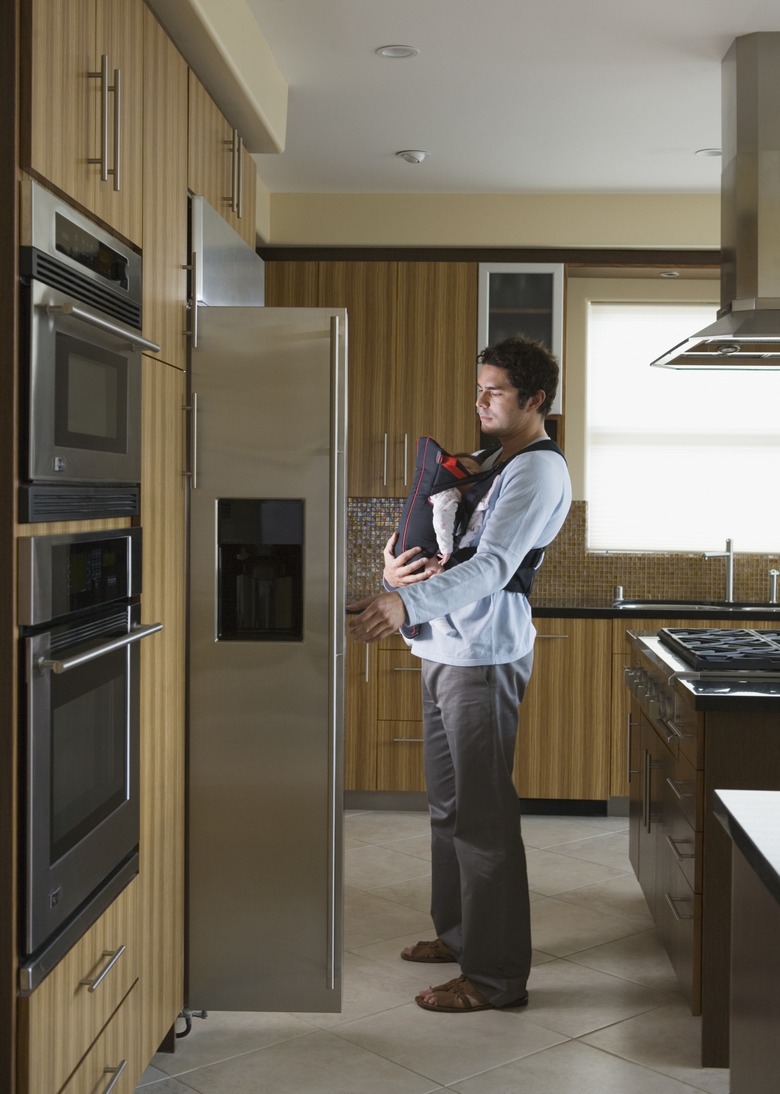How To Prevent Frost Buildup In A Freezer
Things Needed
-
Seal, optional
-
Baking soda
-
1 quart lukewarm water
-
Sponge
-
Cloth
-
Freezer thermometer
Tip
When removing food needed for a recipe, gather everything all at the same time rather than continuously going into the freezer or leaving the door open.
Inspect food packages for any little drips or leaks that could introduce moisture into the freezer compartment. Repackage any foods that feel overly moist before setting them into the freezer.
Cleaning the seal with a baking soda solution every two or three months helps ensure a tight seal.
Warning
Avoid using bleach, caustic cleansers or strong detergents on seals. Those products contain harsh chemicals that can degrade the rubber and ruin the tight seal.
Avoid locating a freezer in the sun or next to a water heater, stove, dryer, furnace or dishwasher. Those heat sources warm the air, which increases the humidity levels in the area.
Freezer frost can lead to unpleasant odors, freezer-burned food and limited storage space. Frost occurs when moisture in the air touches the frozen evaporator coils, condenses and then freezes. Frost-free freezers come with timed or temperature-controlled heating elements that turn on and melt the frost. Although this helps slow down frost accumulation, it doesn't eliminate the frost entirely. Fortunately, you can take several steps to help prevent frost buildup in your freezer.
Step 1
Reduce the number of times you go into your freezer every day. Each time you open the door, the cold air flows out and warm air creeps inside of the compartment. Humidity in warm air is the No. 1 cause of frost accumulation.
Step 2
Reduce the amount of time the freezer door remains open. Labeling and organizing your foods so you can easily identify them can help shorten freezer trips.
Step 3
Move your hand around the outside of the freezer door. If you feel cold air, then inspect the seal for damage or dirt. The seal around the freezer door must be tight to keep the cold air in and the warm air out. Replace the seal if you spot any rips or tears.
Step 4
Clean a dirty seal with a solution containing 1 tablespoon of baking soda and 1 quart of lukewarm water. Pour the solution onto a clean sponge and wipe it over the seal. Sponge off the solution with clear water and dry the seal with a clean cloth before closing the freezer door.
Step 5
Store between 2 and 3 pounds of food for every cubic foot of freezer space. Storing any more or less can lead to freezer frost.
Step 6
Place only cool or cold food items in your freezer. Hot foods introduce humidity into the freezer compartment, and that moisture will lead to frost. Set hot food in your refrigerator and allow it to cool down to room temperature before freezing it.
Step 7
Set the temperature so the freezer's interior compartment stays right around zero degrees Fahrenheit. Frost can accumulate with higher or lower temperatures. Keep a freezer thermometer inside of the compartment and check the temperature monthly.
References
- LG: Frost Buildup in Freezer
- National Center for Home Food Preservation: General Freezing Information
- Star-K Online: Keeping Your Cool
- Kitchen Hints From Heloise: More Than 1,527 Time-Saving, Money-Saving, and Work-Saving Hints for Cooking, Cleaning, Shopping and Storing; Heloise
- All-New Hints From Heloise: A Household Guide for the '90s; Heloise
